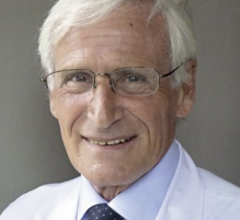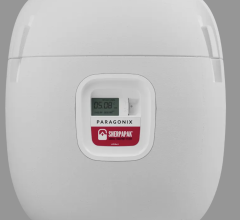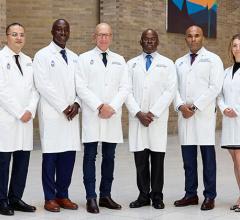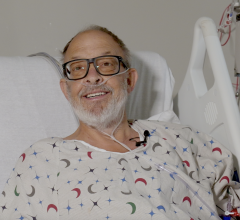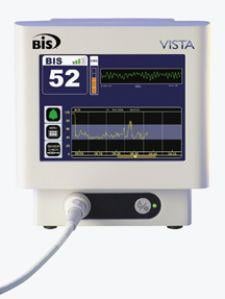
The BIS VISTA measures the brain's electrical activity through a sensor placed on the patient's forehead.
The clinical definition of intraoperative awareness — consciousness during general anesthesia — is a seemingly simple explanation for a complex, and controversial, phenomenon. Opinions surrounding how often intraoperative awareness, also described as anesthesia awareness, occurs, its implications for victims, as well as the best methods for prevention are varied.
But for Carol Weihrer, the issue is crystal clear. Weihrer, who claims she was conscious during a 1998 surgical procedure to remove her right eye, believes that anesthesia awareness is more widespread and debilitating than people realize. And she has the proof, she says, to back-up her claim.
“I have spoken to thousands of people with experiences similar to mine,” said Weihrer. “People like me, whose lives have been turned upside down because of it.”
As founder of the international Anesthesia Awareness Campaign, Weihrer’s goal is to educate the public about the phenomenon and to be a touchstone for other victims.
Weihrer is also lobbying for the mandated use of brain function monitors for patients undergoing general anesthesia. She believes that until these monitors become a standard of care, patients must be proactive in protecting themselves in the OR.
“It’s not enough to ask whether a facility has brain function monitors or whether they use them. You must demand that they use them on you during your surgery,” she explained.
Tracking brain waves
When used in the OR, brain function monitors reportedly measure a patient’s depth of anesthesia and level of consciousness. One of the most popular tools for this purpose is bispectral index (BIS) technology.
Aspect Medical’s BIS monitor involves measuring the brain’s electrical activity through a sensor placed on the patient’s forehead. The BIS value ranges from 100 (indicating an awake patient) to zero (indicating the absence of brain activity). This information is used to guide administration of anesthetic medication. Aspect’s BIS technology is available as a stand-alone monitor or as a module that can be incorporated into other manufacturers’ monitoring systems.
Irene Osborn, M.D., associate professor of Anesthesiology, Mount Sinai School of Medicine, New York, and director, Division of Neuroanesthesia, began using BIS technology in 1996 while at NYU Medical Center and currently uses it in about 80 percent of the surgeries she performs. She says it has definitely made an impact on her ability to care for patients.
“The ability to monitor the brain really helps you improve anesthetic care,” said Dr. Osborn. “There is variability in patients’ response to anesthesia — not everyone requires the same dose or concentration,” she continued. “With BIS, I can separate out the different components of anesthesia and determine how much anesthetic is needed for a particular patient.”
Dr. Osborn uses BIS technology to improve the quality of anesthesia and also to monitor for awareness. Often times Versed is administered just prior to surgery to produce amnesia. With the BIS monitor, Dr. Osborn says she can see the effects of the Versed dose and increase it if necessary.
“In the OR there is a lot of monitoring going on — heart rate, blood pressure and various body systems. With BIS, I can also monitor the brain,” Dr. Osborn said.
Not ready for prime time?
The American Society of Anesthesiology’s (ASA) “Practice Advisory for Intraoperative Awareness and Brain Function Monitoring” makes several recommendations to assist decision-making for patient care with the goal of reducing awareness, but stops short of mandating the use of brain function monitors for this purpose. Instead, the ASA advises anesthesiologists to use their own discretion when it comes to using the monitors.
Although she personally chooses to use brain function monitoring, Dr. Osborn understands why many of her colleagues have yet to embrace it.
“Brain function monitoring technology is not yet good enough, it’s not real time,” explained Dr. Osborn. “What you see on the monitor reflects something that happened 15 seconds ago.”
Others may simply not want to take the time to understand the monitors. If, for example, there was no muscle relaxant administered to the patient, there may be EMG artifact on the monitor and anesthesiologists must be familiar in working around that, says Dr. Osborn. The monitor will not predict movement, rather, it tells how asleep the patient is.
At Mount Sinai, Dr. Osborn estimates that one-third of the physicians use the technology quite frequently, one-third use it for special cases and one-third refuse to use it at all. She does believe, however, that brain function monitors will become standard operating procedure in all hospitals in about 10 years.
“As the technology matures and as we train another generation of anesthesiologists and nurse anesthetists on how to use it, more will want it and the timing will be right for it to become a standard of care,” Dr. Osborn said.
Determined that this is the case — sooner rather than later — Weihrer has taken her Anesthesia Awareness Campaign on the road, speaking both nationally and internationally to physician groups and other organizations. She has performed Grand Rounds, speaking to anesthesia staff at several East Coast hospitals about her own and others’ experiences. She has worked with The Joint Commission on Accreditation of Healthcare Organizations (JCAHO), American Association of periOperative Nurses (AORN) and the American Association of Nurse Anesthetists (AANA), and says she is currently collaborating with the ASA on an anesthesia awareness victims database. MedicAlert bracelets are available through the campaign for patients who have suffered awareness in the past or have a familial disposition to anesthesia awareness.
“The Anesthesia Awareness Campaign is definitely gaining momentum,” Weihrer said. “The public is becoming more involved and demanding assurances.”
Weihrer says she will continue to advocate for change in the OR until her efforts are no longer needed — until brain function monitors are used on every general anesthesia patient and there are no more anesthesia awareness victims. <

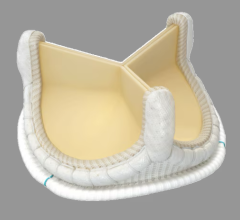
 April 23, 2024
April 23, 2024 


